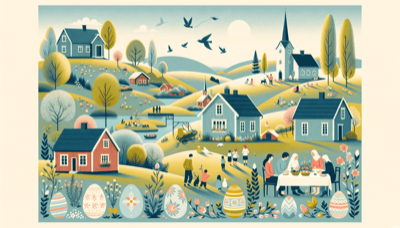We're here to help you keep count of the days to or since a date. Just click the button below and enter your chosen date to get started. Also choose the suggested days or search for a special day above #countingthedays

Easter Sunday in Sweden, known as Påskdagen, is a significant holiday with deep historical roots intertwined with both Christian and pre-Christian traditions. It typically falls between March 22 and April 25, coinciding with the first Sunday after the full moon following the vernal equinox.
Traditionally, Easter commemorates the resurrection of Jesus Christ as described in the New Testament. In Sweden, like in many other parts of the world, Easter blends these Christian beliefs with older pagan customs celebrating spring's arrival.
Egg Painting and Hunting: Eggs are a central symbol of Easter in Sweden, representing new life and fertility. Painting eggs is a common activity, and egg hunts are popular among children.
Feasting: Swedes prepare an Easter smörgåsbord, which is similar to the Christmas julbord. It typically includes various pickled herring, salmon, lamb, and the famous Swedish meatballs.
Påskris: Branches with colorful feathers and decorations are placed in vases around homes – a tradition known as Påskris – symbolizing the palm leaves that greeted Jesus upon his entry into Jerusalem.
Gå påskkärring: Children dress up as påskkärringar (Easter witches) wearing old clothes, colorful headscarves, painted red cheeks, and freckles. They go from house to house in their neighborhoods trading paintings or drawings for candy.
While Easter Sunday is more of a family day spent at home or with relatives enjoying festive meals and gatherings, many also attend church services where special liturgies mark the occasion. Despite its religious connotations, Easter in Sweden has become a cultural event enjoyed by people across different faiths.